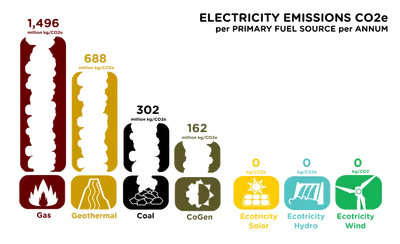50 x Coal plant closures in the US! Nearly good news
18/02/2020

First the good news.
In the last three years, fifty coal-fired power plants in the US have shut their doors.
This is significant in part because this period spans President Donald Trump’s tenure in the White House. Trump has been vocal of his support for coal power and has made a concerted effort to support the industry.
In spite of this support, coal is slowing down. Reuters reportedthat if the trend continues, an estimated 46,600 megawatts (that’s equivalent to 92 Huntly’s) of coal-fired electricity generation will be retired or converted by the end of Trump’s first term. This is even more than the 43,100 MW closed during Obama’s second term (2013-2016).
At the surface, this is good news for the environment – coal is a particularly dirty way of generating electricity and emits high levels of CO2.
However, the decline of coal is not being driven primarily because of its environmental impact. Sure, there have been tougher regulations to mitigate environmental damage, but coal is also becoming less profitable due to a decrease in coal demand from China and an increase in cheap natural gas.
Instead of shifting energy production to become cleaner and greener, the US is replacing coal with natural gas.
Coal or fracking?
While less coal is a good thing, natural gas is not much betterideal as we have shown in our emissions intensity graph here.
Electricity generated from natural gas does have lower CO2 emissions and some studies have shown that it does not have as many potential human health impacts as coal. However, the production electricity via natural gas has been made cheaper in recent years due to advances in hydraulic fracturing, also known as fracking. Although some studies have argued it is better for the environment (overall) than coal, fracking releases a massive large amount of methane into the atmosphere.
Methane is a greenhouse gas that contributes to climate change. It has a shorter shelf-life in the atmosphere than CO2, as it is more easily reabsorbed by terrestrial systems. However, it is 84 times as effective at trapping heat. Current estimates suggest that methane emissions are responsible for 25% of current manmade global warming.
In the US, fracking has expanded as coal has contracted, trading one environmentally damaging electricity source for another. In fact, natural gas may end upproviding 60% of electricityin the US in the next 20 years. This does not bode well for global warming and puts a damper on the good news that coal is on its way out.
Insisting on a greener future
There is a silver lining. The answer is blowing in the wind and shining bright.
Solar and wind are growing rapidly.
Two states (New York and Maryland) have banned fracking and several counties of other states also have local fracking bans. As the industry grows, it is bound to face more and more regulations as the true impacts of the industry become more understood and more widely known.
There is also the promising growth of renewable energy. The US currently has 11% of its electricity generated via renewable means. While this lags behind the global figure of 26.2%, the US has grown and continues to grow its capacity for renewable energy. The US Energy Information Administration reported that renewable energy in the US doubled between 2008 and 2018. Renewable energy is predicted to continue to grow as consumer demand, policy, innovation and competition encourage development in the field.
We hope that these pressures are enough to continue to promote renewable energy in the United States. And if they ever need any pointers for ensuring that their renewable energy is also carbon neutral, we encourage them to get in touch with us at Ecotricity.







